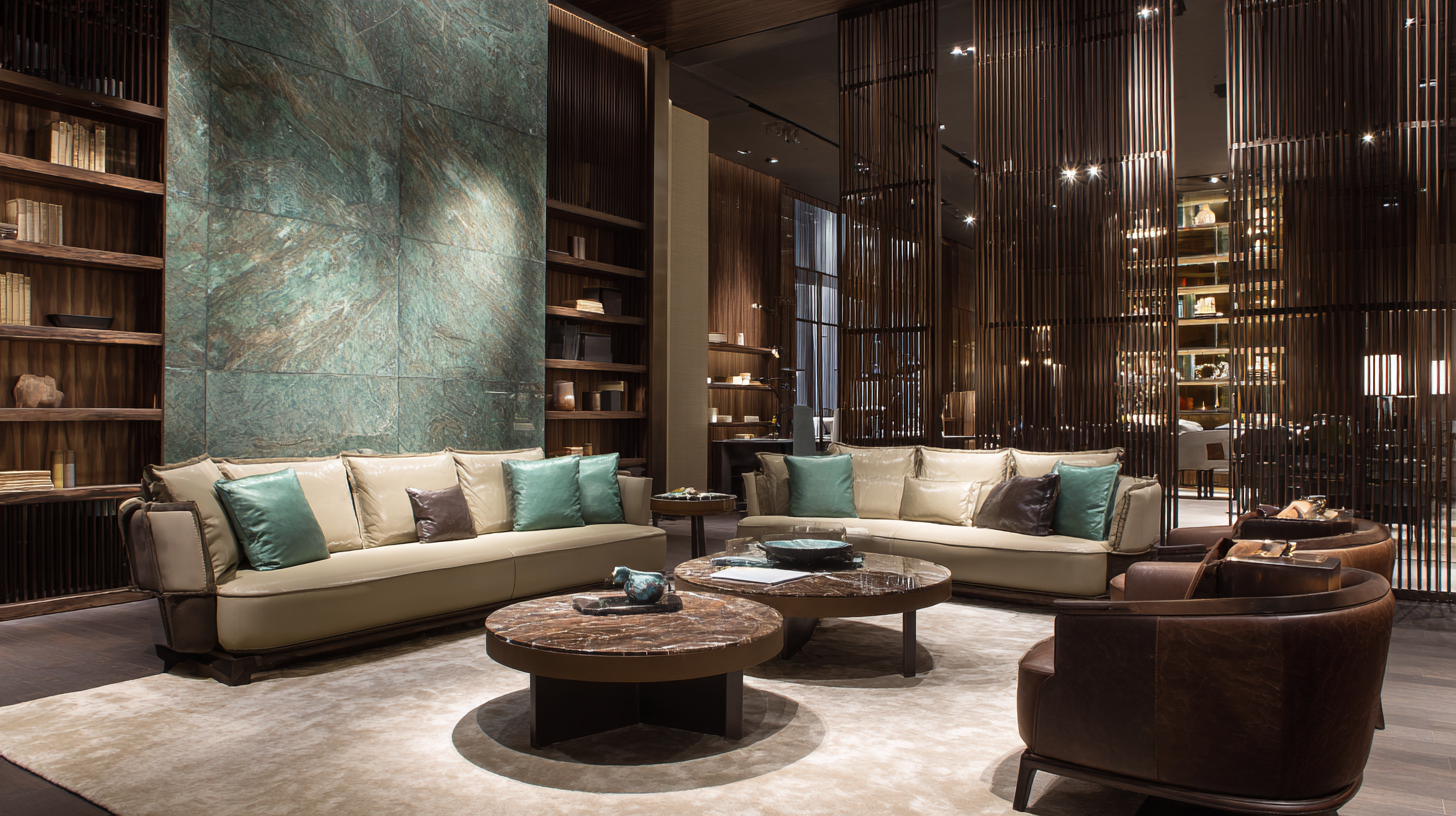- Home Page
- Company Profile
-
Our Products
- Coral Collection Volga
- Continental Collection Riva
- Pearl Collection Volga
- Moon Collection Volga
- Allied Collection Volga
- Onyx Collection Riva
- Lotus Collection Riva
- Rose Collection Riva
- Prince Collection Volga
- Fusion Collection Volga
- Desire Collection Riva
- Opal Collection Volga
- Sapphire Collection Volga
- Flora Collection Riva
- Sensors Collection Volga
- Royal Collection Volga
- Sumo Collection Volga
- Flora Collection Bathroom Accessories
- Versa Collection Volga
- Bathroom Fittings & Accessories
- Cubix Collection Riva
- Squaro Collection Volga
- Choras Collection Volga
- Taj Collection Volga
- Arya Collection Volga
- Blog

How Industry Standards Shape the Best Bathroom Collections: A Guide to Quality and Selection
In the ever-evolving home improvement market, the importance of industry standards in shaping Bathroom Collections cannot be overstated. According to a report by the National Kitchen & Bath Association (NKBA), the bathroom sector is projected to grow by 20% over the next five years, highlighting the increasing consumer demand for quality and functionality. With over 70% of homeowners prioritizing aesthetic and performance-driven features in their bathroom designs, understanding the technical specifications of products is essential for making informed decisions. Industry standards not only ensure safety and durability but also enhance the overall user experience by promoting innovation and sustainability. This guide delves into how adherence to these standards is crucial for selecting the best Bathroom Collections that align with modern design trends and consumer expectations.

Understanding Industry Standards: The Backbone of Quality Bathroom Design
 Understanding industry standards is crucial for anyone looking to invest in quality bathroom design. These standards serve as guidelines that ensure safety, durability, and aesthetic appeal in bathroom products. Manufacturers adhere to specific benchmarks that evaluate materials, construction practices, and performance levels, providing consumers with confidence in their purchases. For instance, plumbing fixtures must meet strict codes to prevent leaks and water wastage, directly impacting long-term efficiency and sustainability.
Understanding industry standards is crucial for anyone looking to invest in quality bathroom design. These standards serve as guidelines that ensure safety, durability, and aesthetic appeal in bathroom products. Manufacturers adhere to specific benchmarks that evaluate materials, construction practices, and performance levels, providing consumers with confidence in their purchases. For instance, plumbing fixtures must meet strict codes to prevent leaks and water wastage, directly impacting long-term efficiency and sustainability.
In the competitive world of bathroom collections, industry standards play an essential role in distinguishing high-quality products from subpar ones. By understanding these standards, consumers can make informed choices about the brands they trust and the materials they select. This knowledge not only aids in selecting the best options for their spaces but also encourages manufacturers to innovate and maintain excellence in their offerings. Ultimately, a well-designed bathroom relies on a solid foundation of industry compliance, enhancing both functionality and style for years to come.
Emerging Technologies in Bathroom Collection: A Look at 2025 Trends
As we look towards 2025, emerging technologies are reshaping the landscape of bathroom collections in ways we could only imagine a few years ago. Smart technology is at the forefront, enabling features such as self-cleaning toilets, touchless faucets, and customizable shower systems. These innovations not only enhance convenience but also promote hygiene and sustainability, addressing modern consumers' preferences for both functionality and eco-friendliness.
In addition to smart fixtures, advancements in materials and design are also prominent. Manufacturers are exploring new composites that are more durable and easier to maintain, such as antimicrobial surfaces that resist stains and germs. Furthermore, augmented reality (AR) is becoming a valuable tool for consumers, allowing them to visualize how different bathroom elements will look in their space before making a purchase. This fusion of design, technology, and consumer empowerment is setting the stage for the bathrooms of tomorrow, where quality and personal preference thrive in unison.
Bathroom Collection Trends: Materials Usage in 2025
This chart illustrates the projected usage percentages of various materials in bathroom collections by 2025. As emerging trends evolve, manufacturers are expected to adapt their offerings to include a diverse range of materials that reflect consumer preferences and sustainability considerations.
Sustainable Alternatives: Eco-Friendly Choices for Bathroom Fixtures
When selecting bathroom fixtures, sustainability should be a top priority. Eco-friendly alternatives not only contribute to environmental preservation but also often feature durable materials that enhance the longevity of your bathroom collection. Consider fixtures made from recycled materials, such as sinks crafted from reclaimed glass or countertops made from recycled stone. These options are stylish, unique, and help minimize waste.
**Tips:** When shopping for eco-friendly fixtures, look for products with the WaterSense label, indicating efficient water use. Additionally, check for certifications from organizations like the Forest Stewardship Council (FSC), which ensures that wooden products are sourced responsibly. Incorporating plants into your bathroom design can also improve air quality, while using low-VOC paints and sealants contributes to a healthier indoor environment.
Another aspect to explore is the use of energy-efficient lighting in your bathroom. LED fixtures not only reduce energy consumption but also come in various designs to complement your style. By combining aesthetic appeal with sustainable choices, you can create a bathroom that reflects both your taste and your commitment to the planet.
Key Metrics for Assessing Bathroom Collections: Quality vs. Cost Analysis
When selecting bathroom collections, it's essential to balance quality and cost effectively. Key metrics exist to help consumers evaluate their choices, ensuring they invest in products that offer long-lasting performance without overspending. One critical factor to consider is the materials used in the collection. High-quality ceramic or porcelain items may have a higher upfront cost, but their durability can ultimately save consumers money on replacements and repairs over time. Additionally, look for industry certifications that denote compliance with safety and performance standards.
Another vital metric is the warranty offered by manufacturers. A robust warranty often indicates the manufacturer’s confidence in their product's quality. Consumers should seek collections with extended warranties as these can reflect higher standards of craftsmanship. Moreover, assessing customer reviews and feedback can provide insights into the true value of a bathroom collection, highlighting areas where quality may shine or fall short relative to cost. By understanding these metrics, consumers can make informed decisions that enhance both their bathroom aesthetics and their budget.
Future Innovations: Anticipating Changes in Bathroom Technologies and Materials
As bathroom technologies evolve, the emphasis on innovation is reshaping how we approach design and functionality. Recent reports suggest that the smart bathroom market is expected to reach $8.51 billion by 2024, growing at a CAGR of 22.1%. This rapid growth underscores a shift toward integrated technologies such as smart mirrors, automated faucets, and advanced water-saving fixtures that enhance the user experience while promoting sustainability.

Innovative materials are also leading the charge in redefining bathroom aesthetics and performance. According to the 2022 Global Bathroom Report, over 60% of consumers prioritize durability and sustainable sourcing when selecting bathroom products. New composite materials, including bio-resins and recycled products, are gaining traction, allowing for both creativity in design and a reduced environmental footprint. As manufacturers respond to these trends, the future of bathroom collections will likely combine cutting-edge technology with ecological awareness, setting new industry standards in quality and selection.
Developed and Managed by Infocom Network Private Limited.


